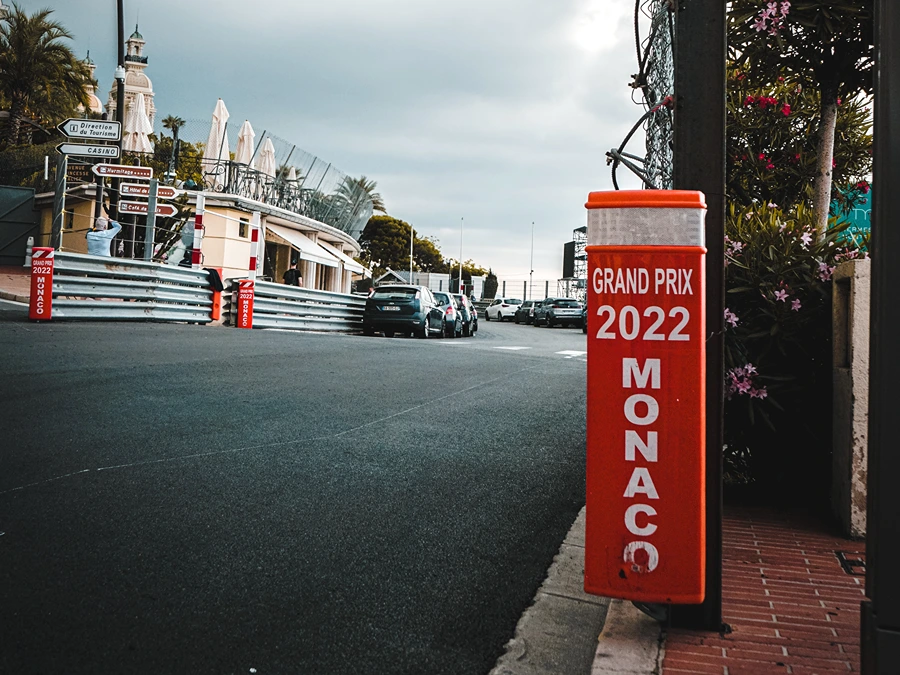Turning Point: 3 Iconic F1 Corners
The Formula One season is much longer than it used to be — 23 races across 5 continents — and while this is great for fans of the sport, some of the newer circuits are a bit.. well, boring. The season closer in Abu Dhabi is a good example — Yas Marina looks great from a helicopter and under the lights at night, but lacks any real drama in its corners and straights, and with huge runoff areas, driver errors are less costly. Fingers are often pointed at track designer Hermann Tilke, and his critics have even coined the term “Tilkedrome” to emphasize the homogeneity of his circuits.
But there are plenty of races on the calendar that get the blood pumping, and the names of the corners alone are evocative of glamor, danger, and speed. Here are three of the most iconic corners in F1 racing.
Casino Square (Monaco)
Monaco now polarizes the F1 world— critics say that, although exciting for drivers, the race is a procession, and overtaking almost impossible given the size of modern F1 cars and the circuit’s largely unchanged format.
But it does have plenty going for it too — Casino Square is a right-hander that goes past the Casino de Monte-Carlo — itself a cultural landmark dating from 1865. The Grand Prix weekend sees the Casino packed out every night, and it has featured in many movies such as Ocean’s Twelve, Condorman, and of course two James Bond movies. Casino games themselves are a popular phenomenon, and this is reflected by the rising global appeal of online casinos, which provide immersive variants of traditional games such as video poker and roulette, and classic themed games such as Irish Slots.
Many fans defy the critics and maintain that Monaco’s glamor and status override the lack of overtakes, and justify its position as the “Jewel in the Crown” of motorsport. And for drivers, Monaco provides a unique challenge with zero margin for error, and a rollercoaster of a circuit that takes them through twists and turns such as Casino Square, alongside Mirabeau, Rascasse, and Sainte Devoute — names etched into our collective consciousness.
Eau Rouge / Raidillon (Spa)
Nestling in the verdant hills of the Ardennes forest, Circuit de Spa-Francorchamps is a beloved racetrack, and an indelible part of F1 history. The race is usually exciting, not only due to the speed of the track (one of the most high-octane on the calendar) but also for the unpredictability of its local weather, with heavy rain suddenly clearing, then hot sunshine descending into thunderstorms, all in the time it takes to run a Grand Prix.
When most people say ‘Eau Rouge’, what they really mean is ‘Raidillon’— a curving hill up which drivers go flat-out. The hill is deceptively steep, and most TV cameras don’t do it justice. Drivers cannot see over its crest, so blasting up it at full throttle requires guts and faith. You do see overtakes on the hill — Mark Webber’s breathtaking pass on Fernando Alonso in 2011 is one memorable example — but the speeds are extremely high, and margins are extremely fine. Fast, dangerous, and with a lush forest for a backdrop — Does it get more iconic than that?
Curva Parabolica (Monza)
Monza is another race that every driver wants to win, especially if they’re in scarlet colors. When a Ferrari driver wins at ‘The Temple of Speed’ it sends the Tifosi into rapture and has produced some of the most epic and emotive moments in sport. A bubbling cauldron of excitement off-track, Monza is also regarded as one of the best circuits and has produced thrilling racing on almost every occasion.
One of the best-known corners in F1, the Parabolica is a super-fast, sweeping right-hander that drapes onto the start/finish line. It’s possible to overtake, and hard, although not impossible, to catch a slipstream if you’re close behind another car. But the way racing cars dance around on the apex and exit means that negotiating the Parabolica is a challenge enough in itself, and makes it one of the most iconic and evocative corners in F1.
As a franchise F1 may have lost some of its romance, with a cleaner, more corporate image, and identikit tracks. But some of the old circuits remain firmly entrenched in the hearts of racing fans and drivers alike and are the highlights of a busy F1 calendar.



